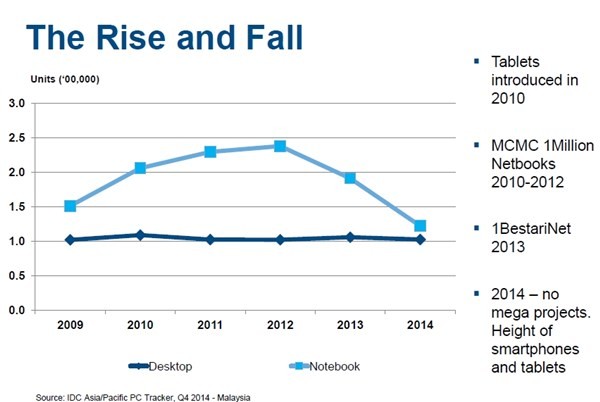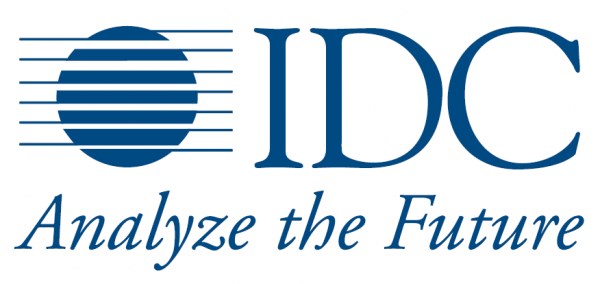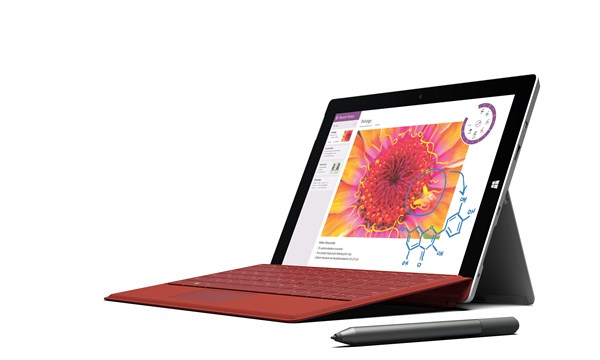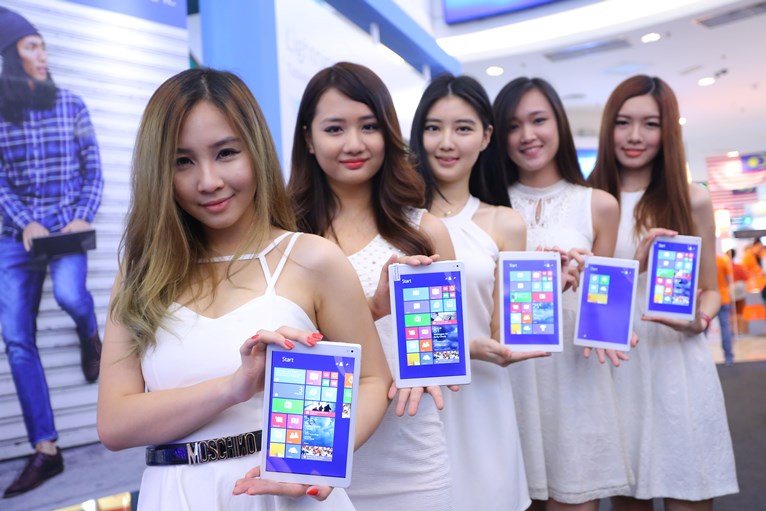In 2014, a total of 2.2million PC units were shipped in Malaysia, according to IDC Asia/Pacific PC Tracker, Q4 2014.

Findings from the tracker also showed:-
- The commercial market only saw business-as-usual projects and fulfillments.
- The consumer market reflected the competitive nature of PC sales with several players exiting the market amidst the onslaught of phones and tablets.
With the recent implementation of the 6% Goods and Services Tax (GST) in Malaysia, IDC expects the GST to negatively impact the local PC market in Q2 2015. Both consumer and commercial spending are expected to slow down significantly and the market will take a few months to adapt to the new tax but should return to normal by mid Q3 2015. In the long run, notebooks should still show a marginal decline due to competition from smartphones and tablets. Desktops are expected to remain flat due to sustained refresh cycles coming from the enterprise segment and the public sector.
IDC told OMGTech that Malaysians change their notebook every 3 years, on average.
The Malaysia PC market is expected to ship 2.2 million PCs in 2015 and decline by an average of 1.3% year on year till 2019. This is an improved outlook on the back of slowing tablet growth and sustained public sector and enterprise spending, it said.
“The current situation for PCs in Malaysia does not appear to be positive. Smartphones continue to compete for consumer wallet and mind share, mega projects from the government have slowed down and there is still a lot of uncertainty regarding GST impact. However, PCs will still be a significant player in the IT hardware market as new PC form factors are regularly introduced in the market. This shows IT vendors are still creating value and driving innovation,” said Ng Juan Jin, market analyst who tracks Malaysia PC market at IDC Asia/Pacific.
Ng said that convertibles devices are expected to match traditional notebook prices within 18 months to 24 months, globally.
The one-store-many-brands PC store used to be the retail business model of choice but has fallen out of favor in recent years. Based on IDC’s observations in the region, foot traffic in these stores is dropping. The margins are growing slimmer now and the retail structure has to go in a new direction. IDC is of the opinion that the distribution model has to transition towards a more exciting consumer-centric model which is usually employed by mobile phone vendors.
IDC also believes vendor stores have to be identifiable as one stop centers for the vendor’s products and have to offer an attractive, exciting and familiar experience to consumers. For this to succeed, the different devices in stores should promote the overall brand rather than being a source of competition to PCs.













